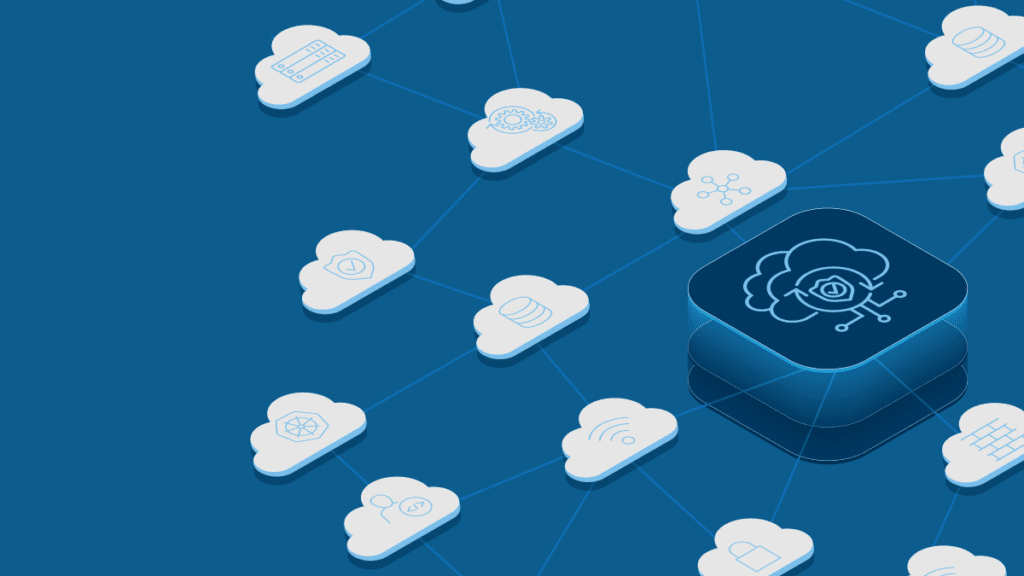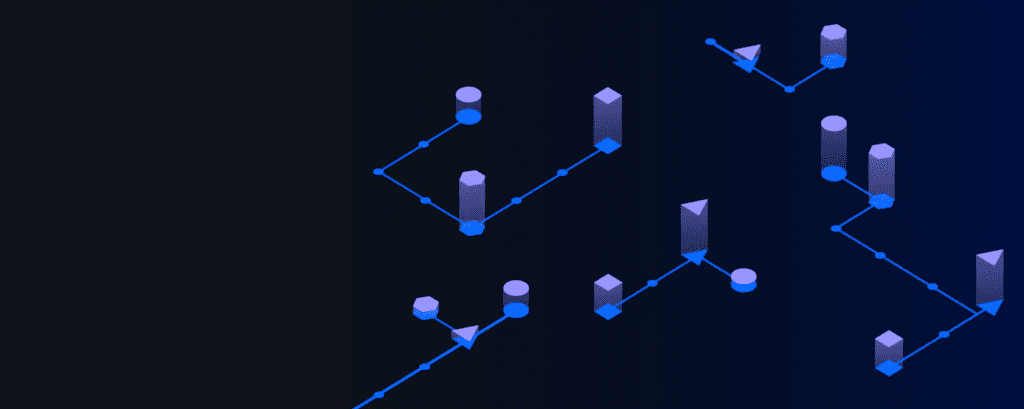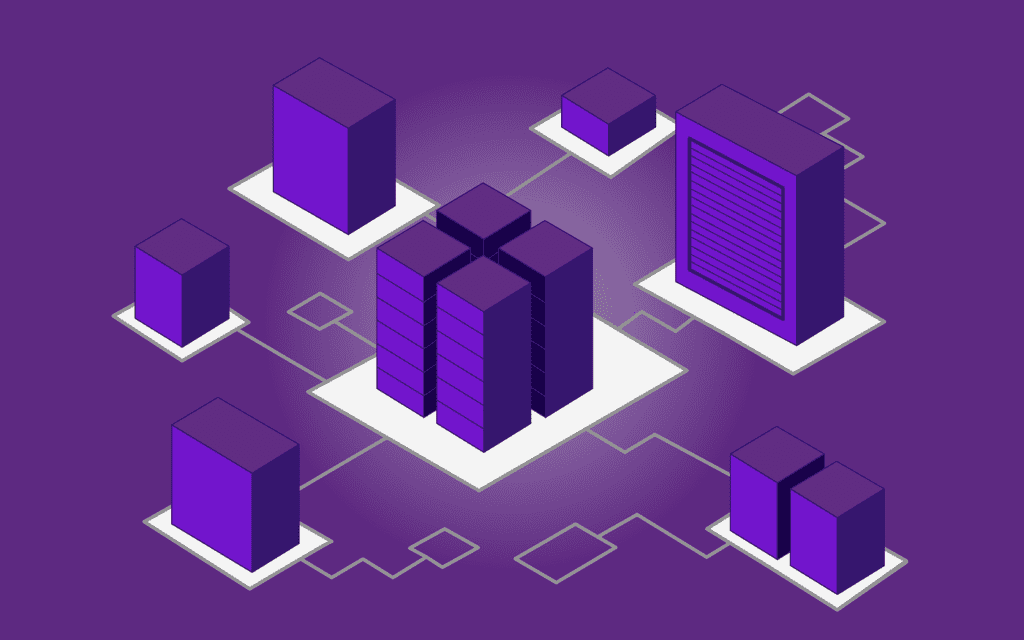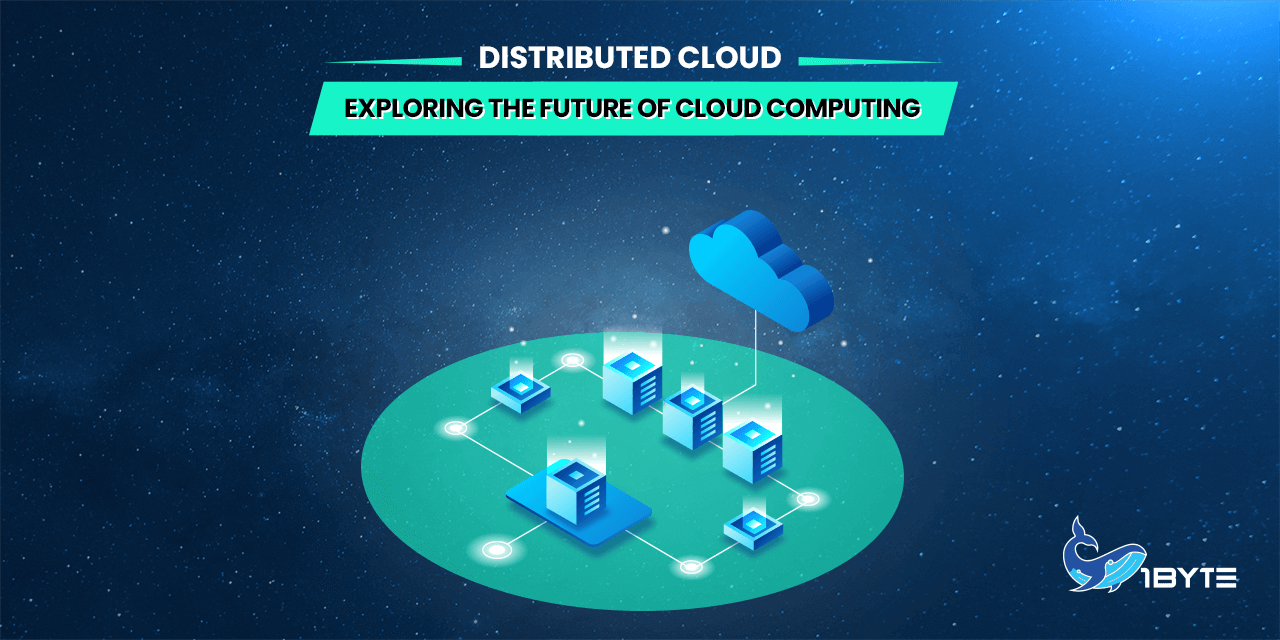Do you know what distributed cloud computing is? It’s the cloud computing of the future, and it’s gaining traction in the computer world. It is, in essence, a novel method to cloud computing that distributes resources across several geographic sites. This method improves performance, decreases latency, increases security and dependability, and is cost-effective.
1Byte will go over all you need to know about distributed cloud computing in this article. Its definition, characteristics, benefits, and problems, as well as its use cases, future, and implementation are all discussed. Let’s get started!
What is Distributed Cloud Computing?
So, what exactly is distributed cloud computing? Let us find out in this first section.
Definition
Distributed cloud computing is a new method to cloud computing that delivers services by leveraging the capacity of several, geographically scattered data centers. It is a step forward from traditional cloud computing approaches, which rely on centralized data centers to store and administer data and applications. Resources are distributed across numerous sites in distributed cloud computing, allowing enterprises to minimize latency, improve performance, and improve dependability and security.
This strategy has various advantages over standard cloud computing approaches, including enhanced scalability, flexibility, and lower costs. Organizations can ensure that their services are available even in the event of a localized outage or disruption by distributing resources across different locations, offering high availability and fault tolerance. Furthermore, distributed cloud computing enables enterprises to comply with data privacy and security requirements that mandate data storage and processing in specified geographic zones.
Components of distributed cloud
Several fundamental components of distributed cloud computing include distributed computation, distributed storage, and distributed networking. The distribution of computer resources, such as processing power and memory, across numerous data centers is referred to as distributed computing. This brings apps and workloads closer to end users, lowering latency and enhancing performance.

The dissemination of data over different data centers to improve data availability and durability is referred to as distributed storage. Data is kept redundantly across many sites via distributed storage, ensuring that data is available even if there is an outage or disturbance.
The spread of network infrastructure, such as switches and routers, across many data centers is referred to as distributed networking. By allowing data to be routed through the most efficient path, this strategy increases network performance and minimizes latency.
These components, when combined, provide the foundation of distributed cloud computing, providing enterprises with a flexible, scalable, and highly available infrastructure for service delivery. Organizations may improve performance, cut costs, and improve reliability and security by embracing the potential of distributed cloud computing.
Comparison with traditional cloud computing
Distributed cloud computing provides various advantages over regular cloud computing. One of the key distinctions is that in traditional cloud computing, all resources are centralized in a data center, but in distributed cloud computing, resources are scattered across numerous locations. This means that in the event of a data center outage, distributed cloud computing can continue to provide services by accessing resources from other locations.
Furthermore, because resources are closer to end users in distributed cloud computing, latency and response times are reduced, which is not the case with traditional cloud computing. Additionally, because data can be kept and processed locally in different countries, distributed cloud computing allows enterprises to comply with data sovereignty rules, whereas traditional cloud computing may have data stored in a single place.
Statistics on distributed cloud computing
If you’re still on the fence about the influence distributed cloud computing can have on enterprises, consider the following statistics:
- According to industry experts from Gartner, distributed cloud computing is the next stage in cloud computing and represents the industry’s future.
- According to another recent Gartner report, firms that use distributed enterprise benefits will achieve 25% quicker revenue growth than their competitors by 2023.
These data clearly show how distributed cloud computing has the ability to alter the way businesses function, as well as the need of adopting this technology to stay ahead of the competition. As the distributed cloud grows in popularity, more businesses are likely to use it in order to fuel growth and remain competitive in the market.
Recommended reading: Cloud Migration Strategy: A Step-by-Step Guide
4 Benefits of Distributed Cloud Computing
Distributed cloud computing is a novel method to cloud computing that provides numerous advantages to businesses. In this section, we will look at four advantages of distributed cloud computing and why they are important.
Scalability and Elasticity
Scalability and elasticity are two important benefits of distributed cloud computing that make it an appealing alternative for enterprises trying to grow and expand.
Scalability refers to a system’s ability to manage an increasing quantity of work or a growing number of users without degrading performance. Elasticity, on the other hand, refers to a system’s ability to alter its resources automatically in response to variations in demand.
Resources in distributed cloud computing are distributed across numerous sites, making it easy to scale up or down based on business needs. Businesses, for example, can quickly scale up resources to meet higher traffic during peak hours and then scale them back down when traffic drops.
Because businesses only pay for the resources they use, distributed cloud computing is a cost-effective solution because they don’t have to worry about the upfront costs of purchasing and maintaining more gear. Furthermore, scalability and elasticity make dispersed cloud computing more durable, allowing it to continue operating normally even if one or more resources fail.
Reduced Latency and Enhanced Performance
When compared to traditional cloud computing, distributed cloud computing has reduced latency and faster performance. Because resources are scattered across various places, data and applications may be accessed more quickly. Data is processed and stored closer to the users using distributed cloud, resulting in lower latency and faster response times.

One significant advantage is that it allows organizations to create a better user experience for their customers. For instance, if an application is running on a distributed cloud platform, users can access it faster, leading to increased user satisfaction. Furthermore, lower latency can assist firms in making real-time choices, which is critical in particular areas such as banking and healthcare.
Improved Security and Reliability
Distributed cloud computing offers significant improvements in security and reliability compared to traditional cloud computing systems. Data can be stored and processed across numerous locations utilizing a distributed architecture, lowering the danger of a single point of failure. This method also makes it more difficult for attackers to get illegal access to sensitive data because it is distributed across numerous sites and frequently encrypted for added security.
Furthermore, distributed cloud computing can improve dependability by offering redundant backups of data and apps, ensuring that they are available even if one site experiences an outage or malfunction. Furthermore, distributed cloud companies often have many data centers spread across multiple locations, lowering the chance of outage.
Cost-effectiveness
Cost efficacy is one of the most significant advantages of distributed cloud computing. By utilizing a distributed cloud, businesses can avoid costly and time-consuming investments in their own infrastructure. With the distributed cloud, businesses have access to shared computing resources among multiple users. This shared infrastructure permits businesses to pay only for the resources they employ, resulting in substantial cost savings.
Distributed cloud can also save businesses money by reducing the need for IT personnel. With a traditional on-premises infrastructure, businesses must employ IT personnel for management and maintenance. However, with the distributed cloud, the cloud provider handles the majority of management and maintenance. This allows businesses to reduce their IT personnel costs and focus on other aspects of their operations.
Additionally, distributed cloud computing enables businesses to realize economies of scale. With a shared infrastructure, cloud providers can distribute the cost of infrastructure maintenance and upgrades across multiple consumers. This can result in reduced costs per user, making the distributed cloud an affordable option for businesses of all sizes.
Recommended reading: Understanding Cloud Infrastructure: The Basics
4 Use Cases of Distributed Cloud Computing
The advantages of distributed cloud computing extend beyond scalability, cost-effectiveness, enhanced security, and decreased latency. This section will examine various distributed cloud computing use cases, where it has been applied, and the benefits it has brought to businesses and individuals.
Edge Computing
Edge computing is a popular use case for distributed cloud computing because it brings data processing and storage closer to end users, lowering network latency and enhancing overall user experience. Edge computing processes data locally, in edge nodes or devices, rather than centrally in a cloud data center, reducing the stress on the core cloud infrastructure. This also means that edge devices can continue to function even if the network is down, because they can use locally processed data.
One of the advantages of edge computing is that it allows for real-time decision-making because data is processed quickly rather than having to go to a remote data center for processing. This is especially crucial in time-sensitive applications like autonomous vehicles, where judgments must be made fast based on data from several sensors. Edge computing can also be used in Internet of Things (IoT) devices, where the distributed cloud can provide localized computing and analytics capabilities, allowing these devices to operate efficiently and independently.
Edge computing can also assist in reducing the quantity of data that must be transported to a centralized cloud infrastructure since edge devices can filter and process data locally, sending only the necessary data to the cloud data center. This can result in significant cost reductions, especially for data-intensive applications like video surveillance or smart city systems.
IoT (Internet of Things)
The Internet of Things, or IoT, is another area where distributed cloud computing is proving to be quite useful. IoT is simply a network of internet-connected devices that can communicate with one another, ranging from simple gadgets like sensors to large machinery like robots. These devices create massive volumes of data, which must be examined in real-time in order to obtain insights and make informed decisions. Distributed cloud computing is ideal for IoT because it allows data processing to happen closer to the devices, reducing latency and providing real-time analysis.

IoT devices can process and analyze data considerably quicker and more efficiently with the help of distributed cloud computing, resulting in enhanced accuracy and decision-making. This enables real-time responses to changing circumstances and events, which is critical in many industries like manufacturing, transportation, and healthcare. In the healthcare business, for example, IoT devices may monitor patients’ vital signs in real time, and distributed cloud computing can analyze that data and notify medical experts in the event of an emergency.
Distributed cloud computing is also critical for guaranteeing IoT devices and data security and privacy. By bringing processing closer to the devices, it eliminates the need to send data over vast distances, lowering the danger of data breaches and cyber assaults. Furthermore, distributed cloud computing can enable real-time data encryption and authentication, guaranteeing that data is always secure.
AI (Artificial Intelligence) and ML (Machine Learning)
AI (Artificial Intelligence) and ML (Machine Learning) are two of the most rapidly evolving technologies that are revolutionizing a variety of sectors. To learn and become more intelligent, these systems require massive amounts of data. AI and ML algorithms can access and analyze massive datasets more efficiently with the use of distributed cloud computing, resulting in faster and more accurate results.
AI and machine learning algorithms can use distributed cloud computing to divide huge datasets into smaller chunks and spread them over numerous nodes. This approach dramatically saves data processing time and increases the overall efficiency of AI and ML models.
Furthermore, the distributed cloud provides significant cost advantages by allowing enterprises to scale resources up and down on demand, minimizing the requirement for on-premises equipment. Organizations may employ distributed cloud computing to build complicated AI and ML models without having to worry about the underlying infrastructure, allowing them to focus on innovation and generating new use cases.
Healthcare organizations, for example, can use distributed cloud computing to construct predictive models capable of analyzing vast volumes of medical data in order to enhance diagnoses and treatments. In the financial sector, distributed cloud computing can assist banks in analyzing massive volumes of financial data in order to detect and prevent fraud.
With the growing usage of AI and ML across industries, distributed cloud computing is emerging as a critical technology for developing and deploying these models at scale.
High-Performance Computing
High-performance computing (HPC) is an important subject of study that is driving innovation and research in a variety of industries. HPC is the utilization of distributed computing resources to do difficult calculations and solve issues requiring massive amounts of processing power. Distributed cloud computing is an excellent platform for high-performance computing applications, allowing businesses to scale up their computational resources to meet the demands of compute-intensive workloads.
One of the most significant benefits of distributed cloud computing for HPC is the ability to grow processing resources on-demand. Organizations can use distributed cloud computing to swiftly and easily add new processing nodes to their HPC cluster as needed and remove them as needed. This adaptability enables enterprises to optimize their HPC infrastructure in terms of cost, performance, and resource use.
Another benefit of distributed cloud computing for HPC is that it gives enterprises access to a large pool of computing resources. Organizations can use dispersed cloud computing to connect to a global network of data centers and cloud providers, providing them access to computer resources spread across several geographic regions. This distributed HPC technique can assist enterprises in reducing latency, increasing redundancy, and improving the overall performance and dependability of their HPC infrastructure.
Recommended reading: Public Cloud vs Private Cloud: Which One Should You Choose?
3 Future Scenarios of Distributed Cloud Computing
As previously said, distributed cloud computing has enormous potential to alter how we use the cloud. What, though, is the future of this technology? In this section, we will look at three different future possibilities for distributed cloud computing and how they might affect industries, individuals, and society as a whole.
Growth and Adoption
It’s simple to see why the growth and use of distributed cloud computing is on the rise, and it’s relevant to the growth of cloud as a whole. According to Gartner, enterprise IT investment is shifting to the cloud, with over $1.3 trillion at stake, and this figure is expected to expand to about $1.8 trillion by 2025.
The public cloud services market will continue to grow at a rapid pace across all categories as cloud computing expands and new technologies are deployed. Distributed cloud is one such technology that is projected to intensify the cloud’s ongoing disruption of IT markets. This means that organizations of all sizes are likely to adopt distributed cloud computing in the future years in order to remain competitive and reap the numerous benefits it provides.
Advancements
Distributed cloud computing is still in its infancy, but it holds great promise for the future of cloud technology. One of the most recent developments in this subject is the recognition that distributed cloud computing is the next generation of cloud computing. This suggests that the traditional method of cloud computing, in which all resources are stored in a centralized location, will soon be obsolete. Instead, distributed cloud will provide organizations with more flexible and efficient alternatives.

Cloud-Native Platforms (CNPs) will be critical in the future of distributed cloud computing. These platforms enable the development, deployment, and management of distributed applications. They will be critical in enabling enterprises to reap the benefits of dispersed cloud computing. According to Gartner, firms who embrace dispersed cloud computing will see 25% quicker revenue growth than their competitors. This demonstrates that the future of cloud computing is shifting toward a distributed approach, and organizations that adopt it will have a huge competitive edge.
Impact on the IT Industry and Businesses
Distributed cloud technology will have a big impact on the IT industry and enterprises as it develops. The way firms treat IT infrastructure will be one of the most fundamental developments. Businesses will find it easier to manage their infrastructure and optimize their resources as distributed cloud computing allows them to deploy resources across various locations.
Businesses are expected to save money by using dispersed cloud computing because they will only pay for the resources they use. Furthermore, distributed cloud computing delivers a higher level of security and reliability to enterprises, which is crucial for firms that rely significantly on cloud services.
Additionally, businesses will profit from shorter innovation cycles since they will have access to cutting-edge technology, services, and resources. This will enable them to keep ahead of the competition and adapt more rapidly to changing market conditions.
The expansion of dispersed cloud computing will also have an impact on the IT industry. As distributed cloud technology becomes more common, IT workers will need to learn new skills in order to efficiently manage the infrastructure. Furthermore, the adoption of dispersed cloud computing will open up new business prospects for cloud service providers, resulting in new jobs and revenue streams.
Leverage 1Byte’s strong cloud computing expertise to boost your business in a big way
1Byte provides complete domain registration services that include dedicated support staff, educated customer care, reasonable costs, as well as a domain price search tool.
Elevate your online security with 1Byte's SSL Service. Unparalleled protection, seamless integration, and peace of mind for your digital journey.
No matter the cloud server package you pick, you can rely on 1Byte for dependability, privacy, security, and a stress-free experience that is essential for successful businesses.
Choosing us as your shared hosting provider allows you to get excellent value for your money while enjoying the same level of quality and functionality as more expensive options.
Through highly flexible programs, 1Byte's cutting-edge cloud hosting gives great solutions to small and medium-sized businesses faster, more securely, and at reduced costs.
Stay ahead of the competition with 1Byte's innovative WordPress hosting services. Our feature-rich plans and unmatched reliability ensure your website stands out and delivers an unforgettable user experience.
As an official AWS Partner, one of our primary responsibilities is to assist businesses in modernizing their operations and make the most of their journeys to the cloud with AWS.
Conclusion
As a prominent cloud computing provider in Cambodia, 1Byte understands the necessity of staying current on technological breakthroughs in cloud computing. The advent of distributed cloud technology has offered us with new options to improve our service delivery, and we are determined to seize these opportunities.
To summarize, distributed cloud computing is the cloud computing of the future, and it provides a slew of advantages to enterprises and organizations trying to optimize their cloud infrastructure. Distributed cloud computing, with its greater scalability, flexibility, and security, is poised to alter the way businesses function in the digital age.
We are thrilled about the possibilities of distributed cloud technology as a forward-thinking cloud computing organization and look forward to exploiting it to help our clients achieve their business objectives. We believe that distributed cloud computing is the way of the future, and we are ready to assist businesses and organizations in making the most of this exciting new technology.

